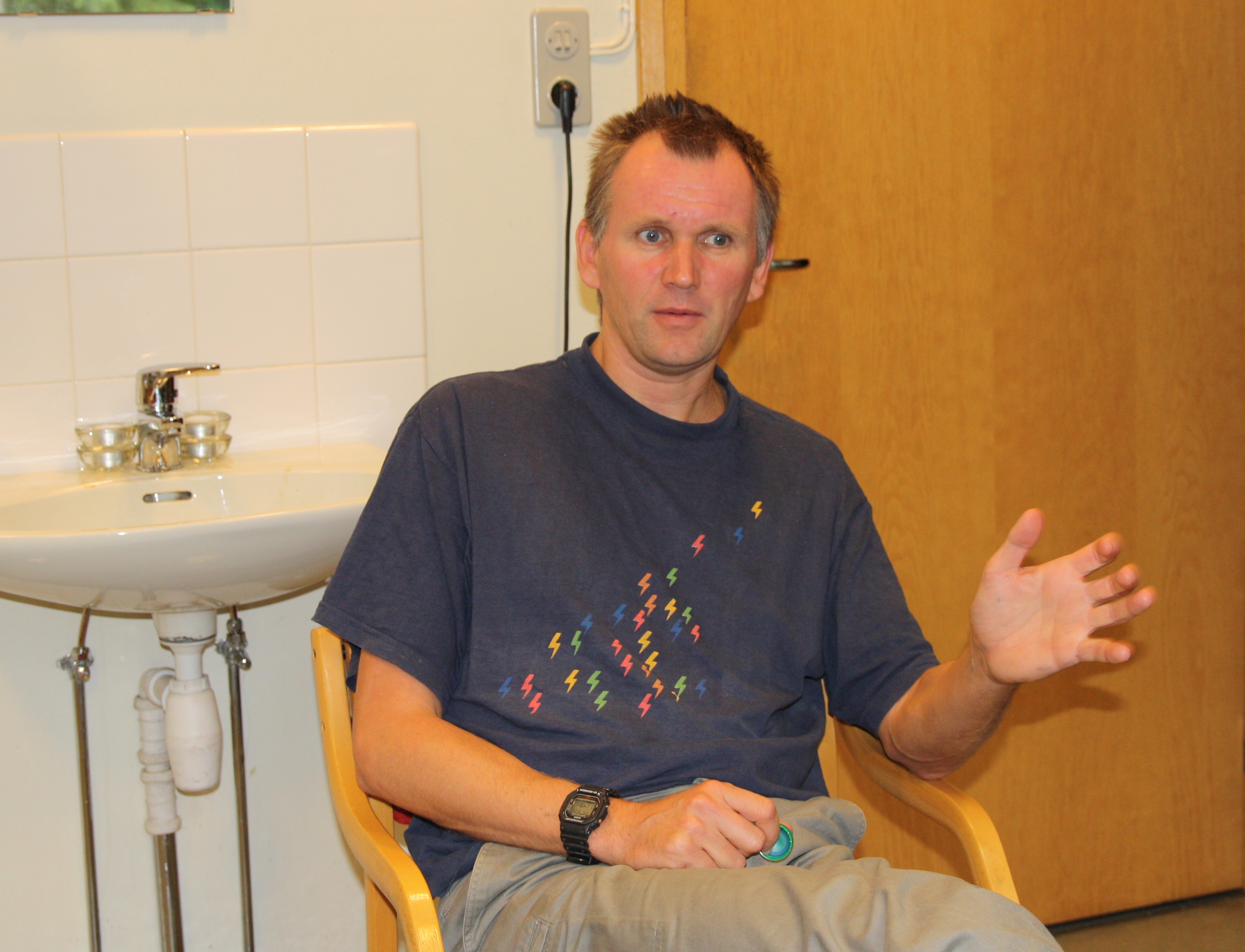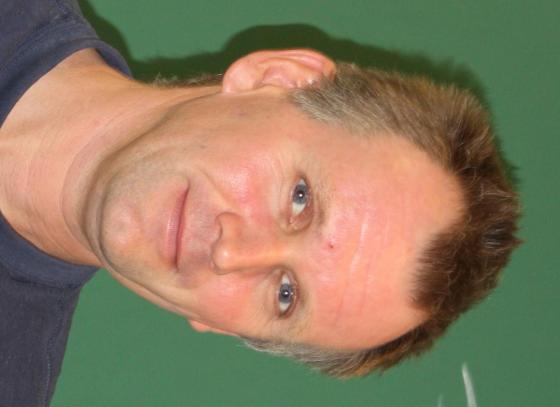Change from the top down
What does it take to change the gender balance in the most male-dominated physical sciences? This is an issue that Jan Petter Hansen of the University of Bergen knows a lot about. Under his leadership, the percentage of women in the Department of Physics and Technology is finally on the rise.

The Science Building - a 47,000 square metre cement block – looks out over the city of Bergen, bringing to mind Eastern Europe before the fall of the wall. This has been a male bastion of research, where most of the academic fields have consisted of almost 100 percent men. The predominance of men is reflected in everyday practicalities, such as larger restrooms for men than for women. But this is about to change.
“I have taken gender equality into account ever since I started in my position six years ago,” says Jan Petter Hansen, head of the Department of Physics and Technology at the University of Bergen. At that time only one woman was employed as a professor in the department. Today four more women have been hired in academic positions, and new, promising female doctoral and post-doctoral research fellows are in the system.
“It’s clear to me that if we want to recruit the researchers of the future, the best researchers, we have a much better chance of getting a hold of them if we can choose from among the entire population. And then the students who come here need to see that we have female lecturers who teach the subject and that physics is not a discipline for only half the population,” he continues.

Academic strategy
What will it take to increase the percentage of women in the hard sciences such as physics and technology?
“One thing is clear: better gender balance in the physics discipline, and in most of the physical sciences, often stands in opposition to academic strategies. In order to change the gender balance, the strategy must incorporate gender equality. This means that we must take gender balance into consideration when we have vacant positions in areas that we want to develop and actively seek out highly skilled women who we encourage to apply,” explains Hansen.
Many people would find it quite radical to incorporate gender equality into the academic strategy. Is it you, as head of the department, who has taken the lead on this strategy?
“Yes, as head of the department I have a responsibility to draw attention to this issue and to lay down the guidelines. But the University of Bergen has also decided that we must seek to achieve gender balance in all positions. The top administration has sent a very clear signal that we must put focus on gender equality.”
Won’t the scientific quality of research suffer if objectives for gender balance are included in the academic strategy?
“No, not necessarily – and I doubt there is scientific evidence showing this to be the case. If both scientific quality and gender are important, perhaps this means that we need more open calls for proposals and broader academic strategies in general.”
Hansen says that the female researchers who have been recruited to the department have contributed more than just their strictly scientific expertise.
“They have been very skilled at profiling the discipline outside of the university. They have gone to the newspapers and disseminated their research findings in exciting ways. It’s easy to show that when it comes to externally oriented activities here in the department, the women make a greater contribution than the men.”

Challenges
In reality, it can be difficult to recruit women applicants, regardless of how well qualified they are believed to be. Hansen thinks it is important to be prepared to face opposition and challenges within the academic community.
“Everyone agrees that we need to recruit women as long as it does not apply to their own group. We can agree in principle to put focus on gender equality, but when it comes to making concrete choices about which candidate to hire, principles don’t apply any more. An academic group will not easily accept losing good candidates when there is a feeling that gender equality is the reason.”
In highly male-dominated academic groups, male candidates from the same group often compete against women from outside groups. In this case, it may be extremely difficult to select the woman from the outside even though she is equally qualified. There are no easy answers in situations like these, Hansen believes. When the budget allows, two people can be hired instead of one. When this is not possible, some difficult choices have to be made, he adds.
Hansen, himself, has made some controversial choices as head of the department, and he knows that some think he has not involved the staff enough in his decisions.
“It’s difficult to change the gender balance in a conservative democratic system. There comes a point when the majority does not support the choices that must be made in order to recruit more women. This is quite simply because we are starting from a highly male-dominated level, and before we achieve a more balanced group, we must make some choices. Without a clear mandate from the leadership that makes it possible to sustain these principles, I think it is difficult to make any progress.”
In other words, you are saying that in this field it is not possible to change from the bottom up?
“That’s right. Change will not happen from the bottom up.”

Support from above
However, Hansen feels that he has gotten good support from the top administration, noting it is crucial that the leadership backs up the efforts of the department heads who are “involved in the struggle on a daily basis”.
“What is enacted at the highest level, what the Rector says, is all-important. A clear signal must be sent about the leadership’s vision on practical policy, and the University of Bergen has done this. I perceive gender equality to be an integral part of all the university’s activities, from the top administration to the faculties to the academic departments.”
The university’s overall action plan states that all faculties must have their own action plans for gender equality. The leadership at the Faculty of Mathematics and Natural Sciences has made gender equality a priority, which Hansen believes is the key to continuing the efforts to improve the gender balance when he leaves his position soon as head of the department.
“If gender equality is not on the list of things to include in the ongoing dialogue with the faculty, as it has been throughout my entire term, then the pressure will let up.”
Lack of resources
Hansen is fairly satisfied with what they have achieved in the department to improve gender balance in recent years, although he would have liked to come even farther.
“I see that the process has begun, but in no way have we achieved our objectives. Five women out of 35 academic employees is nothing to brag about. If we had 10 women, at least we would have a gender balance that reflects the percentage of women who are beginning to study physics, and we could be rather sure that we had a stable group of both genders.”
Achieving this, however, can be difficult. Hansen believes that the situation regarding resources at the department will be the greatest challenge for gender equality efforts in the future.
“We don’t anticipate any significant turnover in the staff due to age, and we see a tendency toward shrinking rather than increasing budgets, so it is hard to imagine that we will manage to recruit so many women,” he explains.
Based on six years of experience as head of a highly male-dominated department, Hansen has some advice for politicians who want to ensure that gender equality efforts continue within the research groups:
“Rather than short-term, piecemeal measures, there needs to be a long-term plan with a ten-year perspective that awards new, permanent resources to successful groups. This could be viewed in connection with academic plans drawn up by departments which currently have an unacceptable gender balance,” he concludes.
Translated by Connie Stultz
During the autumn we will present some of the leaders from the higher education sector in Norway who have been successful in changing the gender balance in their areas.
The first of these is Jan Petter Hansen, head of the Department of Physics and Technology at the University of Bergen since 2004. He has also served on the Gender Equality Committee at the university.
Jan’s advice: Be clear and always do what know deep down is the right thing.
Women account for 30 % of the post-docs and 15 % of the permanent academic staff in the department.
The Department of Physics and Technology:
- Has incorporated gender equality into its academic strategy and actively sought out qualified female applicants in subject areas that the department wants to develop.
- Is establishing a network of women in Professor II positions from related academic groups within the department. The women will attend seminars, take excursions and engage in other high profile activities in the department. The department receives funding for the network from central gender equality allocations and incentive funds for hiring women in Professor II positions
- Has made physical adaptations to the premises. For instance, the department has made a relaxation room with a massage chair and the opportunity to breastfeed. It has also built a bar to encourage social interaction and installed a larger women’s restroom.
